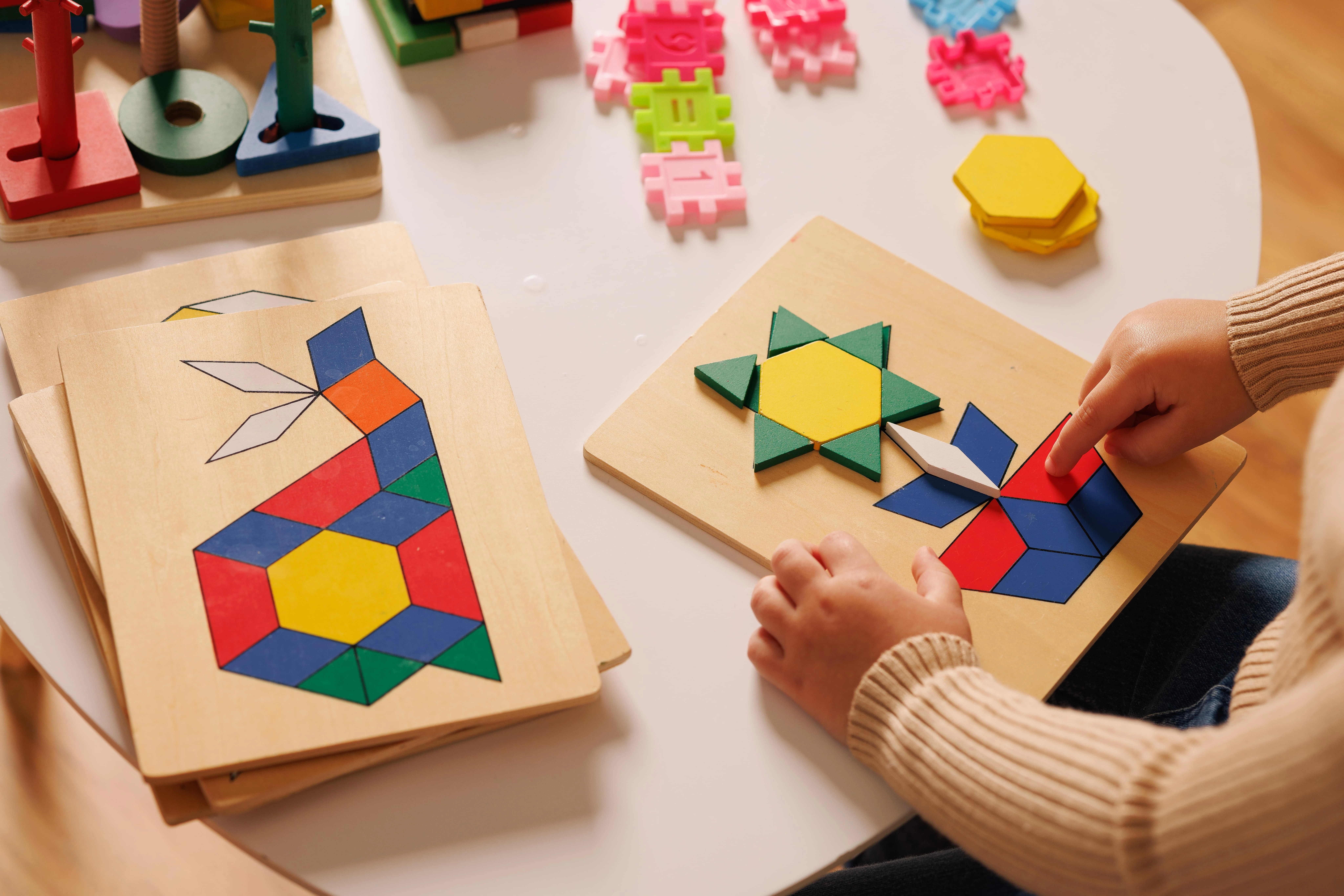5th Grade Math Lesson Plan with Template

When planning the school year ahead, it’s important to make lesson plans for the first few weeks of school.
There are a lot of moving pieces and variables that may change things those first days and weeks, so it’s best to be prepared.
Making weeks of 5th grade math lesson plans may feel daunting to some, but it doesn’t have to! This article will give you a free 5th grade math lesson plan example to get you started.
5th Grade Math Lesson Plan with Template

Fifth graders will learn many important skills throughout this school year that lay the foundation for the years to come.
What skills and concepts you will teach will vary depending on what curriculum standards you adhere to. You may need to make 5th grade math common core lesson plans or you may use a different system.
Here are some of the most common concepts that fifth grade math students need to know:
Number and Operations
- Place Value: Understand the place value system.
- Addition and Subtraction: Perform multi-digit addition and subtraction with ease, including decimal addition and decimal subtraction.
- Multiplication and Division: Fluently multiply multi-digit whole numbers and perform long division with one- and two-digit divisors. Recognize multiplication as scaling and use visual fraction models for understanding.
- Decimals: Read, write, compare and round decimals to the thousandths. Perform operations (addition, subtraction, multiplication and division) with decimals to hundredths.
- Fractions: Add, subtract, multiply and divide fractions and mixed numbers with unlike denominators, understanding fraction equivalence and comparison. Interpret a fraction as division of the numerator by the denominator.
Algebraic Thinking
- Patterns and Relationships: Identify, analyze and extend numerical patterns and relationships using tables, rules and graphing patterns.
- Expressions and Equations: Write and interpret numerical expressions, and understand the order of operations to evaluate these expressions.
Measurement and Data
- Units of Measure: Convert among different-sized standard measurement units within a given measurement system (e.g., unit conversion like converting 5 cm to 0.05 m).
- Volume: Understand concepts of volume and solve volume problems by counting unit cubes and using the formula for the volume of a rectangular prism.
- Data Interpretation: Represent and interpret data using line plots, bar graphs and other graphical representations.
Geometry
- Properties of Shapes: Classify two-dimensional figures into categories based on their properties, understanding the hierarchy of shapes.
- Coordinate Plane: Graph points on the coordinate plane to solve real-world and mathematical problems. Understand axes and coordinates in the first quadrant.
Additional Concepts
- Powers of Ten: Understand the relationship between powers of ten and place value, including exponents.
- Visual Models: Use visual fraction models to understand and represent fractions, decimal operations and multiplication as scaling.
Free Sample Fifth Grade Lesson Plan

An example lesson plan can be a lifesaver for working efficiently and saving time. No need to waste time staring at a blank screen and wondering how to get started.
This free 5th grade math lesson plan example can be used as is or you can simply use parts of it. You can even just choose to use the structure and make your own lesson plan.
We want this sample lesson plan to be a resource that makes your days as a teacher easier
Looking for a different grade level? Check out our other math lesson plans!
- 1st Grade Math Lesson Plan
- 2nd Grade Math Lesson Plan
- 3rd Grade Math Lesson Plan
- 4th Grade Math Lesson Plan
- 6th Grade Math Lesson Plan
- 7th Grade Math Lesson Plan
- 8th Grade Math Lesson Plan
- Generic Math Lesson Plan
Let’s dive into the lesson plan!
5th Grade Math Lesson Plan: Multiplying Numbers Mentally by Breaking Them into Smaller Parts

Learning Objectives or Goals
- Students will learn to multiply numbers mentally using various strategies.
- Students will understand and apply the distributive property to break numbers into smaller, manageable parts for multiplication.
- Students will improve their mental math skills and computational fluency.
Teaching Strategies
- Direct instruction and demonstration
- Guided practice with teacher support
- Independent practice
- Pair and group work for collaborative learning
- Use of manipulatives and visual aids
Materials Needed
- Whiteboard and markers
- Chart paper
- Multiplication flashcards
- Number blocks or base-ten blocks
- Worksheets with multiplication problems
- Student math journals
- Pencils and erasers
Specific Procedures and Activities
Introduction (10 minutes)
- Warm-Up Activity: Begin with a quick mental math warm-up. Ask students to solve simple multiplication problems mentally (e.g., 6 x 5, 7 x 8) and share their answers.
- Set the Stage: Explain the importance of being able to multiply numbers mentally and how breaking numbers into smaller parts can make multiplication easier.
Direct Instruction (15 minutes)
- Introduce the Concept: Write a larger multiplication problem on the board (e.g., 23 x 6). Ask students how they might solve this mentally.
- Demonstrate the Distributive Property: Break the problem down using the distributive property:
- 23 x 6 = (20 + 3) x 6
- = (20 x 6) + (3 x 6)
- = 120 + 18
- = 138
Explain each step and emphasize how breaking the problem into smaller parts makes it easier to solve. - Model More Examples: Work through several more examples together, such as 34 x 5 and 47 x 8, breaking each into smaller parts and solving step by step.
Guided Practice (15 minutes)
- Group Work: Divide students into small groups and provide each group with a set of multiplication problems to solve using the distributive property. Circulate around the room to offer support and answer questions.
- Use Manipulatives: Provide number blocks or base-ten blocks to help visual learners understand the concept of breaking numbers into smaller parts.
Independent Practice (10 minutes)
- Worksheet Activity: Hand out worksheets with multiplication problems. Students will solve these independently, applying the strategies they have learned.
- Math Journals: Ask students to write a brief explanation of the strategy they used to solve one of the problems, reinforcing their understanding and ability to communicate mathematical concepts.
Closure (10 minutes)
- Review and Reflect: Go over a few problems from the worksheet as a class, discussing different strategies students used and highlighting the correct use of the distributive property.
- Exit Ticket: Give each student an exit ticket with one multiplication problem to solve mentally and explain briefly how they solved it.

Grading or Scoring
- Class Participation: Observe and note student engagement and participation during group work and class discussions.
- Worksheets: Collect and review worksheets for accuracy and correct application of multiplication strategies.
- Math Journals: Evaluate students’ written explanations for clarity and understanding of the concepts.
- Exit Tickets: Check for correct answers and reasoning on exit tickets to assess individual comprehension.
Goals for the End of the Lesson or Unit
Short-Term Goals:
- Students will be able to multiply two-digit numbers by single-digit numbers mentally with accuracy.
- Students will demonstrate their ability to break numbers into smaller parts using the distributive property.
Long-Term Goals:
- Students will develop greater confidence in their mental math abilities.
- Students will be able to apply these multiplication strategies to solve more complex problems in future lessons.
- Students will improve their overall computational fluency and readiness for more advanced mathematical concepts.
Improve Grade 5 Student Math Performance with Prodigy

Prodigy Math is an engaging, curriculum-aligned math game designed to make learning math fun for students from grades 1 to 8. No matter what curriculum you use, from Common Core to TEKS, Prodigy Math has done the research and made sure that the content is relevant.
The game also uses adaptive learning technology to tailor challenges to each student's skill level, providing personalized learning experiences.
Students embark on quests, battle monsters, and earn rewards, all while practicing math concepts.
You will have access to detailed reports that track student progress, identify areas of struggle, and highlight achievements. This allows for targeted intervention and support.
Prodigy Math also allows you to assign specific skills or areas for practice, making it easy to differentiate instruction and meet the diverse needs of students.
Make math magical with Prodigy Math and watch your students' skills soar!










